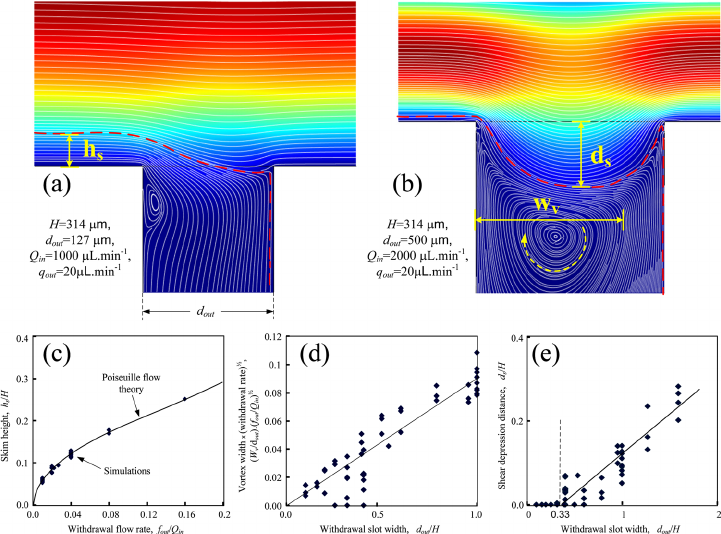
Introduction: COMSOL Multiphysics is a powerful simulation software package used by engineers, scientists, and researchers to model and simulate a wide range of physical phenomena, including fluid flow, heat transfer, electromagnetics, and structural mechanics. With its intuitive graphical user interface and flexible modeling capabilities, COMSOL enables users to simulate complex multiphysics problems and analyze the behavior of fluid flow in various engineering applications. In this extensive guide, we’ll delve into the intricacies of simulating fluid flow in COMSOL Multiphysics, covering everything from setting up simulation models to analyzing results and optimizing designs.
Section 1: Introduction to COMSOL Multiphysics 1.1 Understanding Multiphysics Simulation: Get acquainted with the concept of multiphysics simulation and its significance in engineering and scientific research. Understand how COMSOL Multiphysics enables users to model and simulate coupled physical phenomena, such as fluid-structure interaction, heat transfer, and chemical reactions, in a unified environment. Explore the advantages of multiphysics simulation for solving complex engineering problems and gaining insights into the behavior of real-world systems.
1.2 Installing COMSOL Multiphysics and Getting Started: Before you can start simulating fluid flow in COMSOL Multiphysics, you’ll need to download and install the software on your computer. COMSOL Multiphysics is available for Windows, macOS, and Linux platforms and can be obtained from the COMSOL website. Launch COMSOL Multiphysics and familiarize yourself with the user interface, including the model tree, geometry editor, physics interfaces, and study settings, where you’ll create and manage simulation models.
Section 2: Setting up Fluid Flow Simulation Models 2.1 Creating Geometry and Mesh: Start by creating the geometry of your fluid flow simulation model using the geometry editor in COMSOL Multiphysics. Learn how to import CAD (Computer-Aided Design) geometries or create simple geometries from scratch using primitive shapes and Boolean operations. Generate a mesh for the geometry to discretize the domain into smaller elements for numerical simulation. Explore meshing techniques, such as tetrahedral and hexahedral meshing, and adjust mesh parameters for optimal simulation accuracy and efficiency.
2.2 Defining Physics and Boundary Conditions: Define the physics of fluid flow in your simulation model by selecting the appropriate physics interfaces and specifying boundary conditions, initial conditions, and material properties. Choose from a variety of fluid flow physics interfaces in COMSOL Multiphysics, such as laminar flow, turbulent flow, multiphase flow, porous media flow, and more, depending on the nature of your simulation. Set up boundary conditions, such as inlet velocity, pressure outlet, wall conditions, and symmetry planes, to represent the physical environment accurately.
Section 3: Solving Fluid Flow Equations 3.1 Formulating Governing Equations: Understand the mathematical formulation of fluid flow equations, including the continuity equation, Navier-Stokes equations, and energy equation, governing the behavior of fluid flow. Learn how COMSOL Multiphysics discretizes and solves these partial differential equations (PDEs) numerically using finite element methods (FEM) for spatial discretization and time-stepping algorithms for temporal discretization. Explore numerical techniques for solving steady-state and transient flow problems in COMSOL Multiphysics.
3.2 Configuring Solver Settings: Configure solver settings in COMSOL Multiphysics to control the convergence and accuracy of fluid flow simulations. Adjust solver parameters such as solution method, convergence criteria, time-stepping scheme, and mesh refinement for optimal performance and stability. Explore advanced solver settings, including turbulence modeling options, multiphysics coupling, and parallel computing, to improve simulation accuracy and efficiency for complex fluid flow problems.
Section 4: Analyzing Simulation Results 4.1 Visualizing Flow Patterns: Visualize the results of fluid flow simulations in COMSOL Multiphysics using a variety of visualization tools and techniques. Generate contour plots, vector plots, streamline plots, and velocity profiles to visualize flow patterns, velocity distributions, and pressure gradients in the simulation domain. Customize visualization settings, such as colormap, plot type, contour levels, and vector scale, to enhance the clarity and readability of simulation results.
4.2 Extracting Quantitative Data: Extract quantitative data from fluid flow simulations in COMSOL Multiphysics using post-processing tools and data export options. Calculate key performance metrics, such as flow rate, pressure drop, shear stress, and turbulence intensity, from simulation results to evaluate the performance of fluid flow systems. Export simulation data to external files or databases for further analysis and integration with other software tools and platforms.
Section 5: Advanced Techniques and Applications 5.1 Modeling Turbulent Flow and Multiphase Flow: Explore advanced techniques for modeling turbulent flow and multiphase flow phenomena in COMSOL Multiphysics. Learn how to select appropriate turbulence models, such as k-epsilon, k-omega, and SST (Shear Stress Transport) models, to capture turbulent effects accurately. Model multiphase flows, such as air-water flows, oil-water flows, and gas-solid flows, using multiphase flow interfaces and phase interaction models available in COMSOL Multiphysics.
5.2 Optimizing Designs and Performing Parametric Studies: Utilize COMSOL Multiphysics for design optimization and parametric studies to explore the sensitivity of fluid flow simulations to design parameters and operating conditions. Define design variables, constraints, and objectives for optimization problems and use optimization algorithms, such as gradient-based and genetic algorithms, to find optimal design solutions. Perform parametric sweeps and sensitivity analyses to study the effects of variations in input parameters on simulation results and system performance.
Conclusion: COMSOL Multiphysics offers a comprehensive and versatile platform for simulating fluid flow phenomena in engineering and scientific applications. By mastering the fundamentals of fluid flow simulation in COMSOL Multiphysics and exploring advanced techniques for model setup, solver configuration, result analysis, and optimization, you can gain valuable insights into the behavior of fluid flow systems and make informed design decisions. Whether you’re designing pumps, valves, heat exchangers, or aerospace components, COMSOL Multiphysics provides the tools and capabilities you need to simulate, analyze, and optimize fluid flow systems with confidence and efficiency. With practice, experimentation, and continuous learning, you can become proficient in using COMSOL Multiphysics to tackle complex fluid flow challenges and drive innovation in your engineering projects.